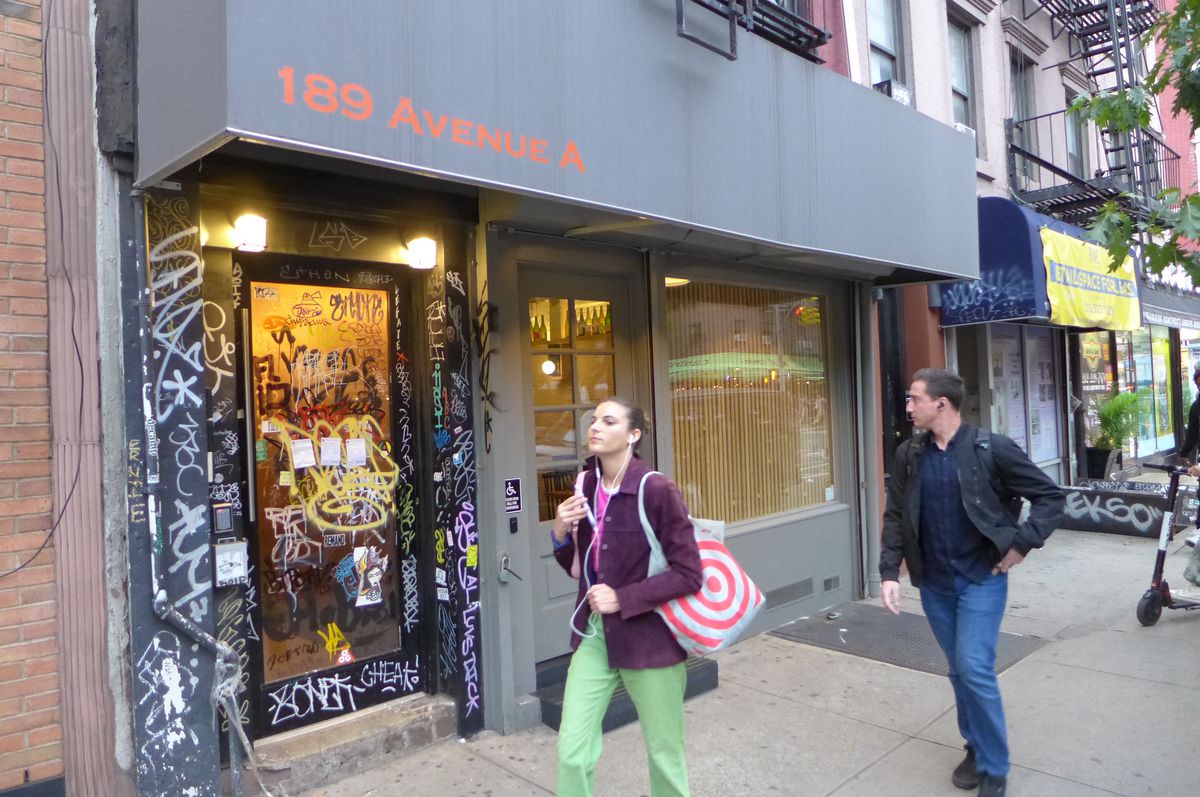I respond to hype just like everyone else, and when I read the three-star review in the NY Times and the New Yorker rave, I figured I’d better get my ass over to Foxface Natural. But there were no reservations to be had on Resy, except late in the evening when I prefer to sleep. My usual approach would be to go as soon as the place opens and sit at the bar. Well, a phone call revealed that Foxface was adamant about its no-walk-ins policy.
A friend discovered that the reservation system itself might be gamed: If you jumped on the Resy waiting list that day and were willing to go for the first seating — after hearing about it only an hour earlier when you’d already made other plans — you’d slide into Foxface Natural like a sword into a sheath. And so a friend and I found ourselves last Wednesday at 6 p.m. sitting at a very desirable two-top in the dining room.
Foxface Natural, at 189 Avenue A, near East 12th Street, is a follow-up to the New York Times one-starred location that served camel and elk meat sandwiches. It closed and was on track to move, but instead, post-Covid, spun off to this higher-end sit-down restaurant. Chef David Santos, former chef owner of Portuguese-ish restaurant, Lauro, runs the kitchen. Before opening the restaurant, owners Ori Kushnir and Sivan Lahat paid $8.8 million for the building that housed the sandwich shop.


Annoyingly, there are no signs identifying the restaurant on its gray exterior, forcing the curious to sidle up to the window to look in like a pirate with a spyglass. Inside, the walls are brick and painted plain white, and the place has an art gallery austerity with no art. There are perhaps 30 seats at the bar and tables along the wall. The lighting is a delight: not too bright and not too dark.

The by-the-glass wine list is brief and memorable, and as we sipped our fizzy Vouvray and orange La Grange de L’Oncle Charles ($17 and $16 respectively), we were exposed to the usual tableside lecture: “Have you been to Foxface Natural before?” We were advised to order two dishes from each of the three categories: raw seafood, apps, and mains. We wisely ordered the first thing on the menu, four thick slices of sourdough bread ($11) with homemade butter and three pickles in colorful little piles.
Yes, the food at Foxface Natural is innovative in its ingredients, recipes, and presentations, though it falls short on the locavore front. “These prawns are from Hawaii,” the server told us as the pair of modest-sized crustaceans appeared, denuded of their exoskeletons, with a papaya and cucumber slaw between them. These are two small prawns for $28. Sure, they’re from Hawaii, but last I checked, most shrimp or prawns (and seafood for that matter) are shipped from far-flung locales, and they’re not that expensive, not for this size, and not for the privilege of eating the heads as a separate dish. (They’re about $18 more than an order of spot prawn from Japan at a place like Momoya in Soho.)
This first plate was perfectly fine sushi bar fare, but then the second half of the dish arrived, garish severed heads like some Halloween nightmare. There were little dabs in the cavity, but not really enough to be considered a filling. There was also nothing in the head to suck, so I picked up my bright red shell and crunched it. Now, I’m a fan of eating the entire shrimp at a Chinese restaurant, but these were hard as rocks and virtually unchewable, and I actually lacerated the top of my mouth on a hard edge trying. Green oil oozed around the plate but what to do with it? We concluded that this dish didn’t quite qualify as food, but it made great art.

Another dish, the kangaroo tartare had transformed into mush by the time it arrived at our table. The kangaroo shipped from Australia may indeed be lean, but it also has no flavor you might distinguish from beef. The dish came sided with a thick black blob said to be eggplant, served with crisp and salty flatbread that was perfect in every way,


Just as we were pushing the plate away, my favorite of the evening arrived — Berkshire pork ear ($23). There were all sorts of other ingredients listed for the dish, including a “scallop skirt” which apparently had been pickled, but the dish was easy enough to understand: little squishy sandwiches of pig ear. I liked it almost as much as pig ear tacos.

I’ll never understand why Pete Wells — whose opinion I value tremendously — got so excited about the goat barbecue ($36), comparing it to Texas barbecue. The dish was described by the waiter as a South African species with North African spices, a bravura display of the restaurant’s internationalism, but what sat before us was a simple plate of fibrous meat chunks interspersed with same-size hunks of soggy eggplant. The meat was plenty smoky, but it was soggy, too, and one of the first things a Texas pitmaster learns is how to keep meat that’s been smoked from also getting steamed as it’s held.
Desserts were two types of gelato ($12 each): one magenta, made with prickly pear, the other off-white buttermilk sprinkled with timut pepper. Both bowls were filled with ingredients that were distracting rather than complementing.

I could say Foxface Natural was a quintessential modern dining experience in which absurdly sourced ingredients are made into almost-edible dishes. Or perhaps this is experiment in metafood, wherein a meal is created more for Instagram than for eating. But there’s a precedent: In 1973 Salvador Dali published a cookbook entitled Les Diners de Gala; some of the recipes were almost doable, while others (like “bush of crayfish with Viking herbs”) seemed like elaborate jokes. Foxface Natural, some 50 years later, channels that cookbook.
